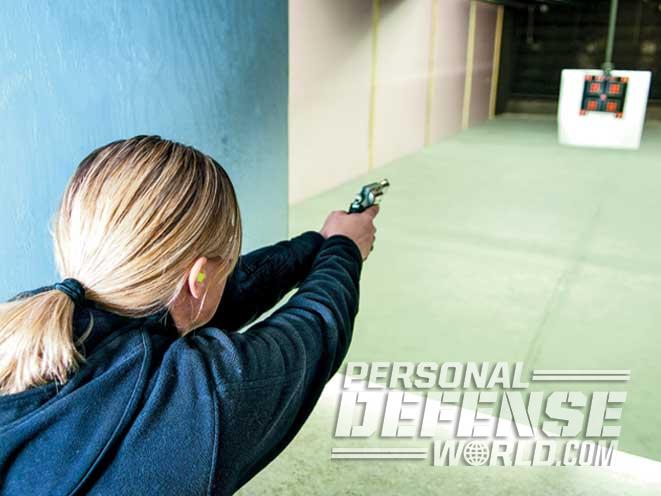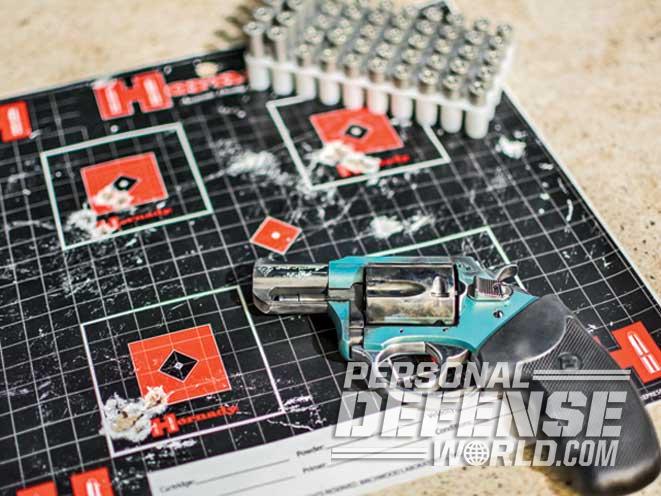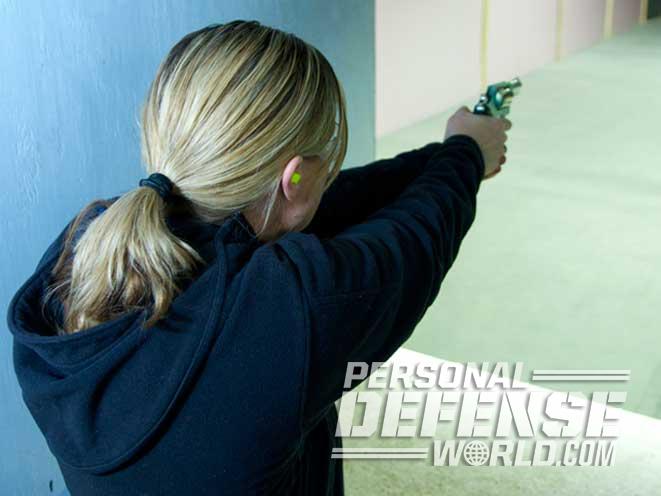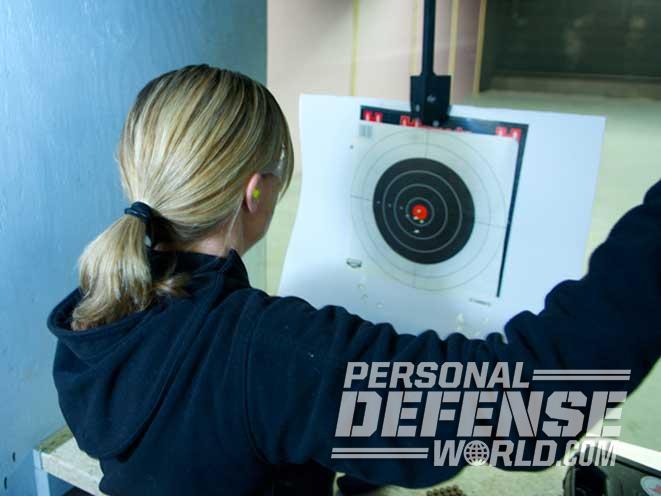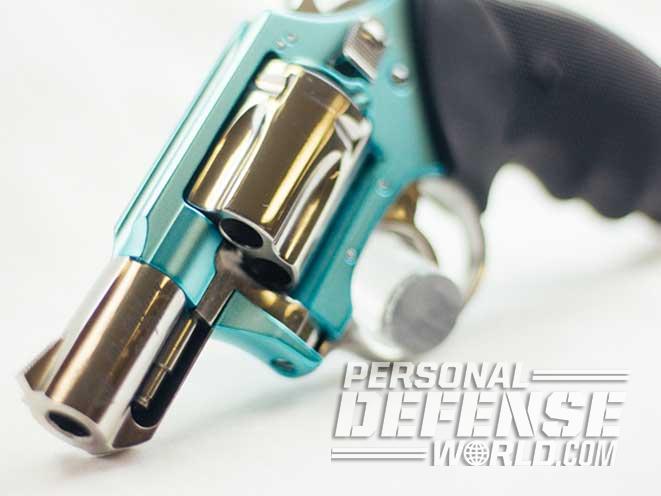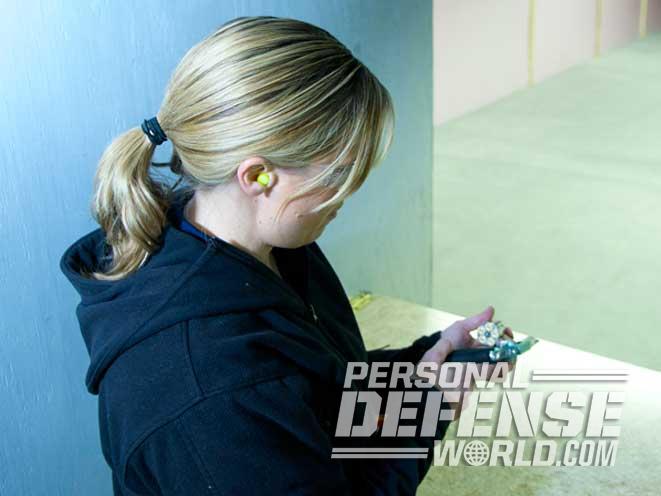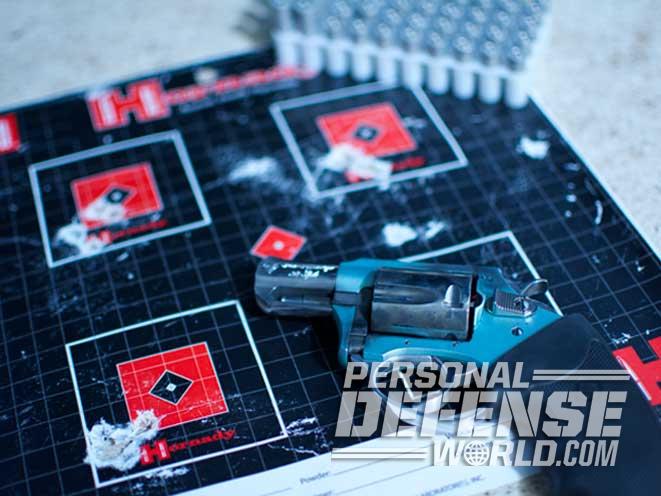According to the 2014 study “Purchasing, Perceptions, and Participation” by InfoManiacs, Inc., feminine colors or patterns on a weapon are by no means the deciding factors women consider when purchasing firearms for personal protection.
Woman may choose colored firearms but they are, first and foremost, more concerned with other features. Firearms that achieve multiple goals may be very successful in the real world.
I am drawn to customizing my firearms if it strikes a balance between functionality and style, so long as the style does not detract from the perception of my firearm’s lethality. For the few firearms I have customized, these customizations are more likely to represent death, like zombies and skulls, or causes I believe in like breast cancer awareness, the military, law enforcement or the NRA. I was recently offered the opportunity to review Charter Arms’ The Tiffany. There were a couple of features of this firearm that felt contrary to my strong personal preferences, but the Charter Arms Tiffany has taught me to never say never again.
Advertisement — Continue Reading Below
Undercover .38
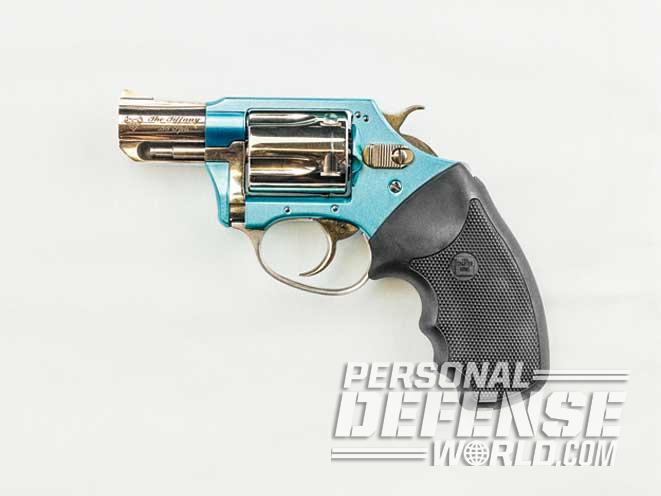
When I received Charter Arms’ new Tiffany revolver, I admit that when I opened the box I was surprised that the color did appeal to me. This response perplexed me temporarily, until I considered why this firearm would aesthetically appeal to me even though it had a colorful exterior finish.
Advertisement — Continue Reading Below
RELATED STORY: 6 Charter Arms Snub-Nose Revolvers
My first conclusion as to why this non-traditionally colored gun would appeal to me was that it was not a bright and distracting color. The hue of the tiffany blue coloring is subdued, classic and almost looks like a blue-silver. The coloring is isolated to the frame of the firearm. The barrel, cylinder, hammer spur, trigger and triggerguard have a stainless steel finish and the grip is black rubber. When I looked at this gun, it did appeal to me since it doesn’t look like a toy because the customization is subtle. This gun still carries the air of its intended purpose as a potentially lethal tool. Upon close inspection, this gun does have a feminine appearance but it is not an overwhelming, “in your face” feminine color scheme. As a woman, I can roll with subtlety.
My elation at the appearance of the gun was suddenly deflated when I looked at the rubberized grip, whose shape violated my years of personal advice to women about features to avoid on a firearm. The rubberized grip has finger grooves, which are a feature that I have historically avoided at all costs.
Advertisement — Continue Reading Below
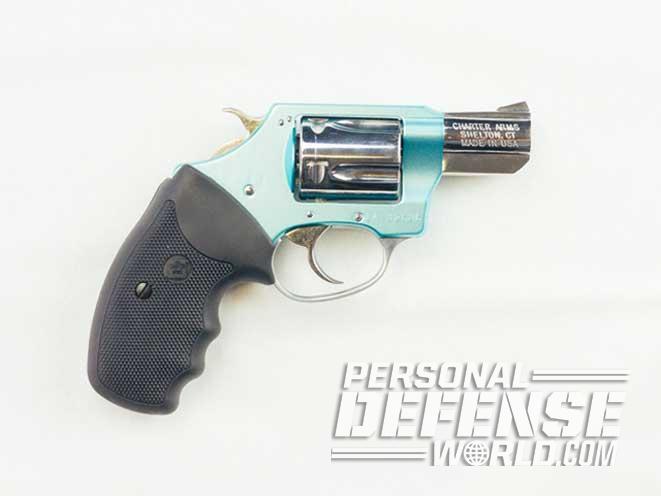
When I began shooting as a police officer, I was issued a double-stack firearm with a rubberized grip containing finger grooves. The firearm was large framed and although these finger grooves gave me the perception that I was able to achieve a solid grip on the gun, more times than not, this feature was problematic. The issue with finger grooves is that they separate the fingers. If the grip is too big (like my first sidearm) or the shooter’s fingers too slender, these grips can create space. Most shooters understand that space is the enemy to consistency because it allows the firearm to shift during recoil, which impacts shot placement. On the other end of the control spectrum, if a shooter’s hand is too big for the grip, the ridges that separate the fingers may dig into the shooter’s fingers.
RELATED STORY: Top 13 Snub-Nose Revolvers
Advertisement — Continue Reading Below
When I started as a new officer, I couldn’t understand why I was shooting my .40-caliber sidearm so inconsistently. A range officer pointed out that it was the grip. I changed the grip, and the problem was resolved.
I picked up the Tiffany and fully expected to experience one of the two aforementioned issues while gripping the gun. I was surprised to discover that this may be one of the few firearm grips that actually fit my hand. My fingers were able to make contact, even with the ridges, and there was no space. My fingers did not fall on top of the grooves. I realize that this may not be the case for all shooters, so do keep in mind that changing out grips that might fit you better is an easy modification to make.
Up To The Test
Advertisement — Continue Reading Below

Due to the horrific winter in Illinois, I had to test this firearm at my club’s indoor range. Club rules specified that I could use only lead rounds with velocities under 900 feet per second (fps), I could not go in front of the shooting line, meaning I could not set up a chronograph, and targets were suspended from a wire and were subject to sway from the ventilation system. That being said, I was impressed with the accuracy of Charter Arms’ .38-caliber Tiffany revolver.
I’m not a big fan of double-action (DA) firearms, but the hammer on the Tiffany can be cocked to make it a single-action (SA) trigger, adding an extra step. The Tiffany’s trigger weight falls between 11 to 12 pounds on the DA trigger pull and 4.5 to 5 pounds on the SA. This DA trigger-pull weight is one that many consumers consider safe, and the SA trigger pull is more consistent with striker-fired firearms currently on the market.
I shot 300 rounds through the Tiffany, half in DAO and half in SA. I enjoyed shooting the Tiffany in SA mode much more so than DA. For me, in DA mode, I found the amount of pull necessary to rotate the cylinder was hard to reduce or finesse just before the shot broke.
Advertisement — Continue Reading Below
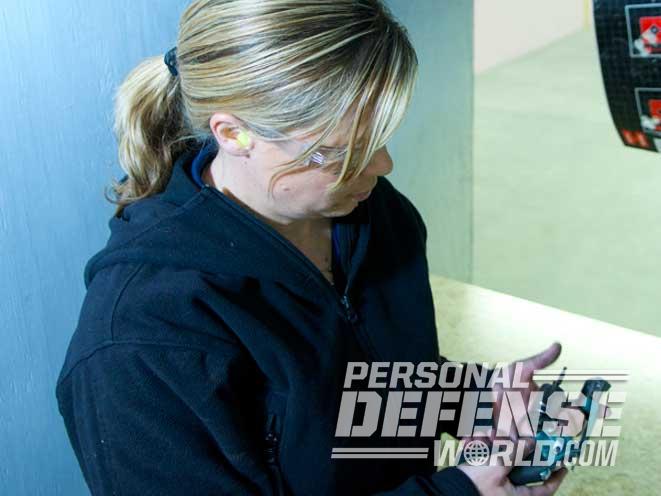
I test fired the Tiffany at 6 yards, standing and unsupported, in SA. My groups were small and consistently left of center. My best group was 0.77 inches.
Even though the last part of my shot felt hurried while firing the Tiffany in DA, my shots were actually more centered. For a closer inspection of the mechanics of my trigger pull, I used dummy rounds to dry fire the Tiffany. I noticed that while pressing the trigger in SA the barrel didn’t move. But when I dry fired in DA mode, I noticed that at the moment my shots broke that felt resistance and strength I needed to break the shot consistently caused me to pull the barrel right. No matter how hard I tried to control my trigger press, every time the shot broke, the barrel went right, compensating for the left-of-center shots I experienced in SA mode.
Advertisement — Continue Reading Below
RELATED STORY: Revolver Vs. Auto – Which Model Fits Your Concealed Carry Needs?
During my shooting session, I experienced no malfunctions. I did notice that the cylinder and frame began to collect powder residue from the ammunition used almost immediately. Ironically, the aesthetics to which I was initially attracted became covered in black-powder residue. I found it was easy to clean the surface of the Tiffany, however, and restore it to its original condition.
Through testing the Tiffany revolver, I learned to never say never when it comes to specific features on a firearm. This firearm opened my eyes to features and aesthetics that wouldn’t typically appeal to me, including an eye-catching exterior finish. It is important to remember that each gun is unique and requires shooters to handle and test fire them in order to determine the best fit.
Advertisement — Continue Reading Below
For more information, visit http://www.charterfirearms.com or call 203-922-1652.
